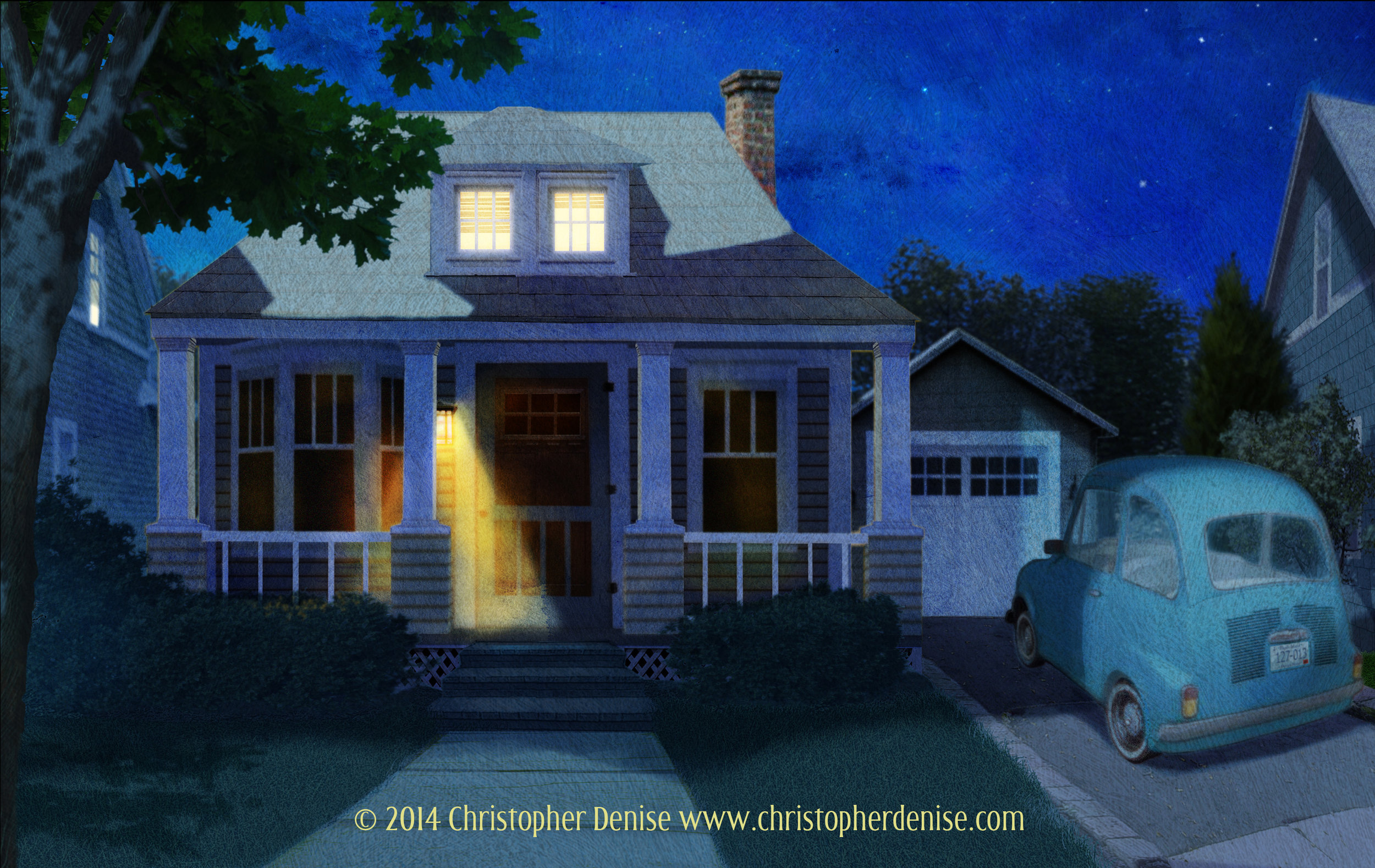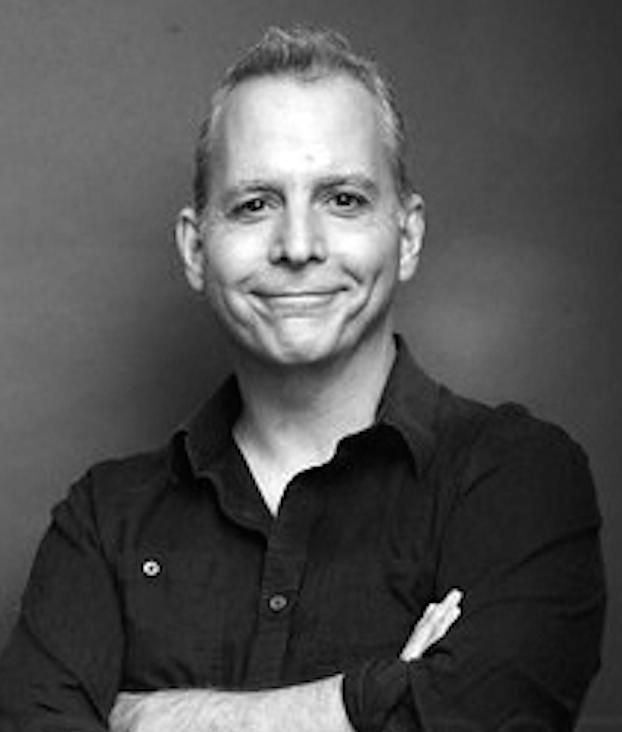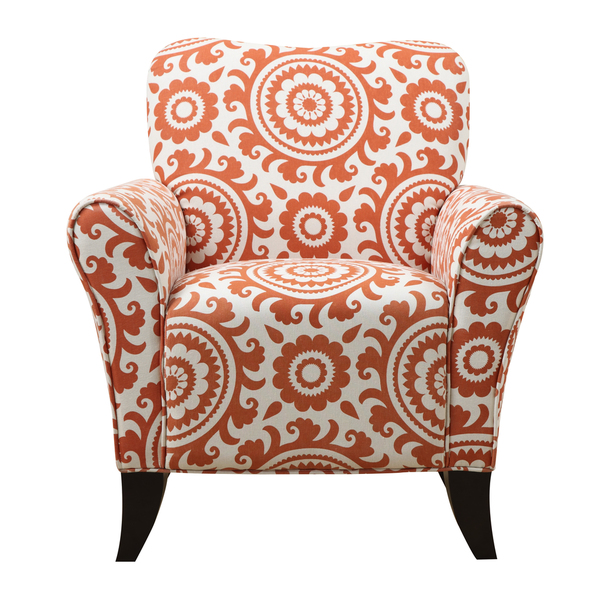Christopher Denise is one of those enragingly talented people who makes, well, everything look easy - from making the artwork, to handling the business, to teaching about creativity, to being a dad. Since he was kind enough to share his truly wise insights about the creative process of illustrating books here today, I'll try not to stay too mad at him!
How do you define creativity? I try not to. It's too ephemeral, like trying to describe the gossamer wings of a firefly to someone that has lost their sight. The closest I could get is something like water formed by a breeze. I try to recognize it (creativity) in my own work and in the work of others. I know it when I see it. It looks and feels truthful, full of life, and made with care. Pretty broad, I know. Sorry!
When did you know that you wanted to be an illustrator? I really didn't know what an illustrator was until I transferred to RISD (Rhode Island School of Design) in the 90's. I always knew that I loved to draw, all kids do.
I just never let anyone talk me out of it and somehow made it into a life and career.
What does the average day in the life of an illustrator look like? It looks pretty amazing from here and I am grateful for it! What an average day looks like depends, in part, on the season. I have been known to play hooky at a moments notice on one of those perfect Rhode Island beach-days. But we are talking averages here. 1.Most days start with the crazy bustle of getting three girls out the door to school/play-groups. Fueled by copious amounts of very good coffee. 2. A daily recap and, perhaps, some creative consultation with my often collaborator and amazing author wife, Anika Denise. 3. Out to the studio to review the production schedule and start sketching or painting on the morning's assignment. I break all of my projects into work units that can be moved around in the calendar. If a particular piece is calling to me I follow the energy and adjust the schedule later. 4. Break at about eleven o'clock to check email and take care of the social media component that has become an important part of my professional life. 5. A bit more drawing/painting here. 6. Inside for lunch with a game of Scrabble on the iPad, or a conversation with our youngest (3 years-old). The conversation tends to be pretty freeform and it is best to stay flexible. 7. More coffee, and back to the paintings. 8. Around 3-4 p.m. I will wander inside for a few minutes just to say "hi" to the kids and make sure everyone had a good day. 9. Painting until about 5:30. Anika is also an amazing cook, so I try to stay out of the way until I am needed. 10. Dinner, wine, laughs. One of my favorite parts of any day. 11. Dishes and homework help, if it is not all done. 12. Reading picture books to the little, putting her to bed, then reading a chapter from something longer for the older ones. Love this part as well. 13. I usually get back to the studio for another two to three hours. If I am on deadline, a bit more coffee here.
What's your working process like? Do you read the book then start with an overall concept, then move on to specifics, or...? I would say that it is more overall to specific. I spend the majority of my time right now working on picture books so I will outline, in brief, that process. 1. I read the manuscript in hand a few times. I need to know that I will be able to connect with something in the story. 2. I begin to break it down into a book. The manuscript needs to work as a book. There are numerous ways that it can "work", but I need to be able to get a sense of at least one of those paths that it might take. 3. Sketching/thinking/looking at other books. 4. More of the above. 5. More of the above. 6. I create very rough scribbles for the entire book. Essentially, creating a book map. Notes included about color/light/references/music notes 7. More of #3. 8. Sometimes tighter sketches, and many, many changes along the way. 9. Painting, changing, repainting. I need to get going on something to see if it is working. Acting and re-acting. 10. Around this time I start painting like crazy with many pieces going at the same time. Always staying open to change with the incredible digital tools at my disposal. 11. While I am finishing up I am usually starting the process all over again with a new book and a new journey. A normal length picture book can take anywhere from 6-9 months.
How long did it take for your "style" to develop, and what did it take to get to that point? I am still developing my style, really. Each manuscript requires different things from me as an artist.
Writing is hard work, and I think it is a great disservice to both the author and their story for me to impose a particular style on a book.
What are the most important considerations when translating the written word into visual imagery? A few things come to mind right away: Stay sensitive to the material. My job as an illustrator is to create a parallel emotional narrative. Be certain that my communication is clear: I am a visual communicator. I love pretty pictures, I love painting them as well! But my job is to communicate something about the story. If I am not doing that part of my job then it matters little how nice the picture looks. Trust your instincts and stand your ground when you need to. At the same time, listen to constructive feedback and see what works for the book.
Favorite artists or influences? A few off the top of my head for different reasons: N.C. Wyeth, Edmund Dulac, Pablo Casals solo cello recordings of the Brandenburg concertos (no offense to YoYo Ma who did a fantastic job with the material), Wes Anderson, Pierre Bonnard, Brad Bird, E.B. White, Monet, David Lynch, Isaac Levitan, J. F. Millet, The Penguin Cafe Orchestra, Beatrix Potter, Andrew Stanton, Neil Gaiman, Ernest Shepard, Harold Budd & Brian Eno, George Inness.
Any daily or weekly habits and practices? I try to start each session, each day as a novice. It helps me to stay sensitive and, in a way, helps take off the pressure. I also try to start each day as a beginner and allow myself to make mistakes. It keeps it interesting for me, and I grow as an artist.
Advice for aspiring illustrators? Besides marrying an investment banker with a penchant for the arts? Make sure that you love this job. It is really, really hard work and many wonderful artists can get run down and fall by the wayside. And that is fine - it's not for everyone. Having said that, it is one of the most fulfilling and enjoyable things you could do with your time. So if you are in love with it, then love your life, and trust your instincts. Don't let anyone talk you out of it!
Christopher Denise is an award-winning children’s book illustrator and visual development artist. His first book, a retelling of the Russian folktale The Fool of the World and the Flying Ship, was pronounced “a stunning debut” by Publishers Weekly. Since then, Chris has illustrated more than twenty books for children, including Alison McGhee’s upcoming Firefly Hollow, Rosemary Wells’ Following Grandfather, Phyllis Root’s Oliver Finds His Way, his wife Anika Denise’s Bella and Stella Come Home and some in Brian Jacques’ acclaimed receive series. His books have appeared on the New York Times bestseller list and have been recognized by Bank Street College of Education, Parents’ Choice Foundation, and the Society of Illustrators Annual Exhibition. He can be reached through his website or Facebook page.
Photo credits (in order): Anika Denise, Corey Grayhorse Photography, From Sleepytime Me by Edith Fine (Random House Kids, 2014), From Following Grandfather by Rosemary Wells (Candlewick Press, 2013), From Sleepytime Me by Edith Fine (Random House Kids, 2014), From Baking Day At Grandma's by Anika Denise (Philomel Books, 2014)











